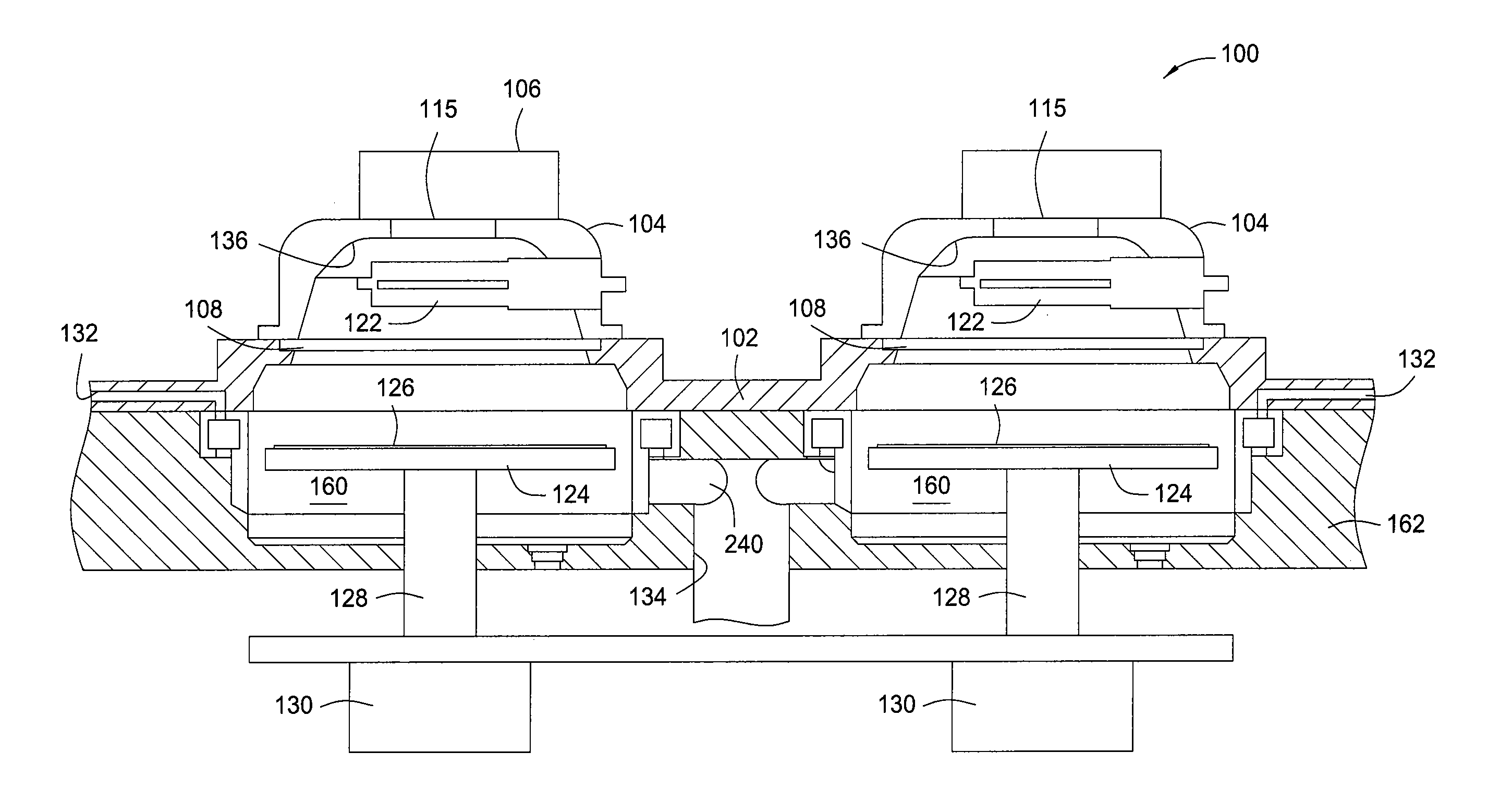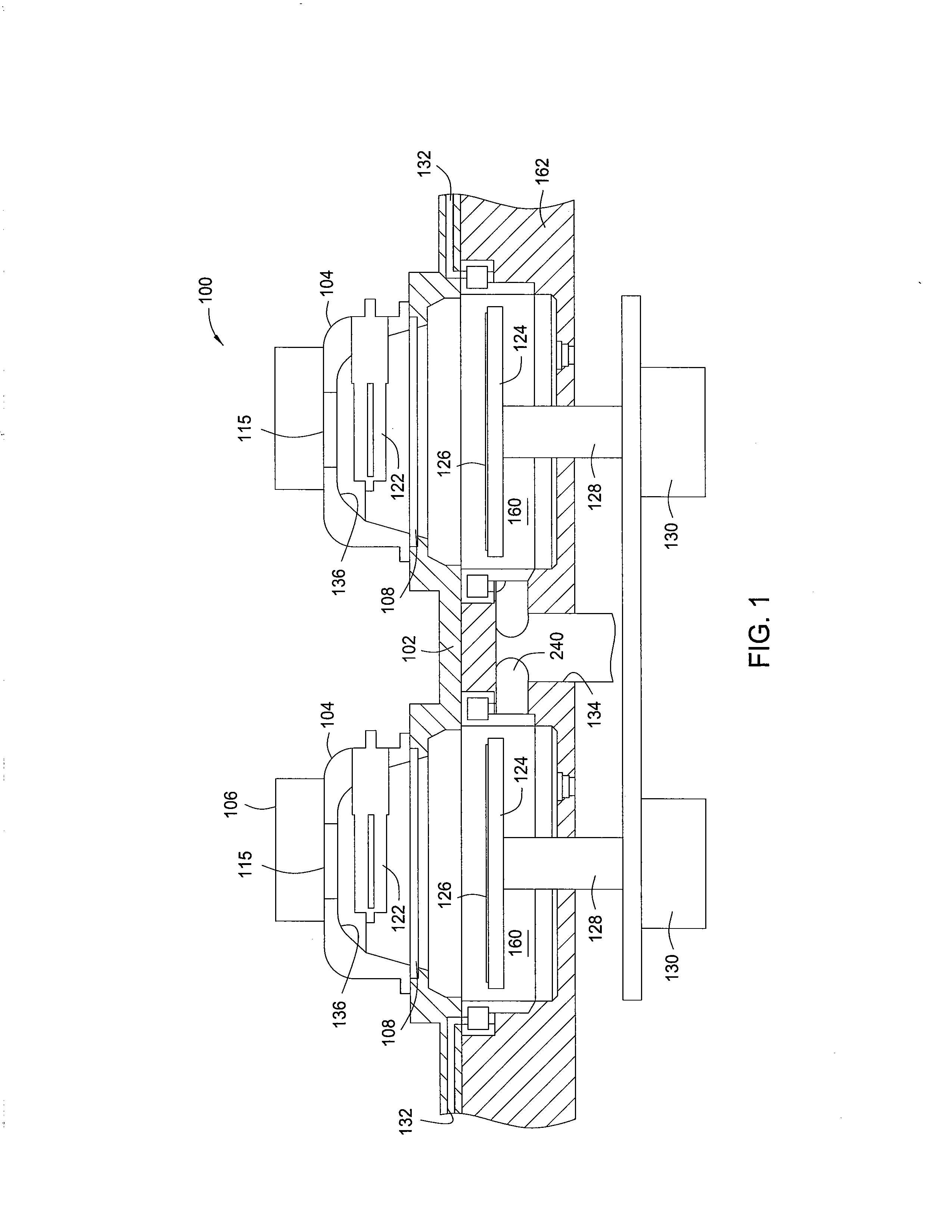Method for seasoning UV chamber optical components to avoid degradation
a technology of optical components and processing chambers, applied in the direction of pretreatment surfaces, coatings, metal material coating processes, etc., can solve the problems of significant tool downtime, corresponding reduction in throughput, and continuous degradation of the efficiency of uv source or particle contamination of the substrate during subsequent processing
- Summary
- Abstract
- Description
- Claims
- Application Information
AI Technical Summary
Benefits of technology
Problems solved by technology
Method used
Image
Examples
Embodiment Construction
[0021]Embodiments of the invention generally provide methods for depositing a carbon-based seasoning layer on exposed surfaces of the optical components (such as an UV vacuum window or showerhead) within a UV processing chamber. The application of the carbon-based seasoning layer protects the optical components from fluorine radical attack during the cleaning while preventing any residue build-up on the optical components in the subsequent processing of the substrate. Additionally, the chamber walls, optical components, and substrate support may be efficiently cleaned with a simple ozone cleaning process with an optimized flow profile distribution across a substrate being processed within the UV processing chamber, a lamp heated chamber, or other chambers where energy in the form of light is used to process a film or catalyze a reaction, either directly on or above the substrate. By preventing any residue build-up on the optical components, chamber components may need to be cleaned ...
PUM
| Property | Measurement | Unit |
|---|---|---|
| Temperature | aaaaa | aaaaa |
| Transparency | aaaaa | aaaaa |
| Circumference | aaaaa | aaaaa |
Abstract
Description
Claims
Application Information
 Login to View More
Login to View More - R&D
- Intellectual Property
- Life Sciences
- Materials
- Tech Scout
- Unparalleled Data Quality
- Higher Quality Content
- 60% Fewer Hallucinations
Browse by: Latest US Patents, China's latest patents, Technical Efficacy Thesaurus, Application Domain, Technology Topic, Popular Technical Reports.
© 2025 PatSnap. All rights reserved.Legal|Privacy policy|Modern Slavery Act Transparency Statement|Sitemap|About US| Contact US: help@patsnap.com



